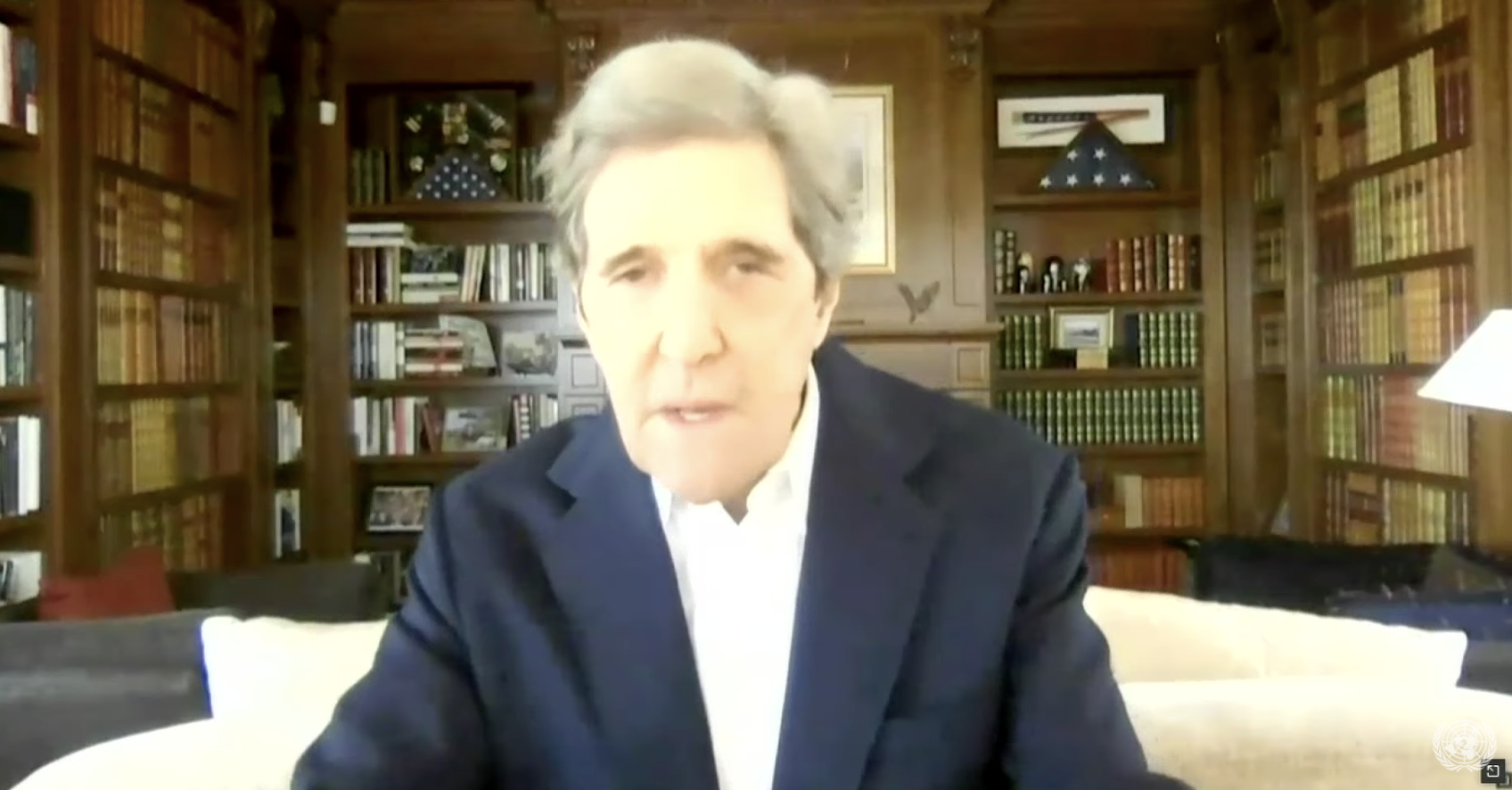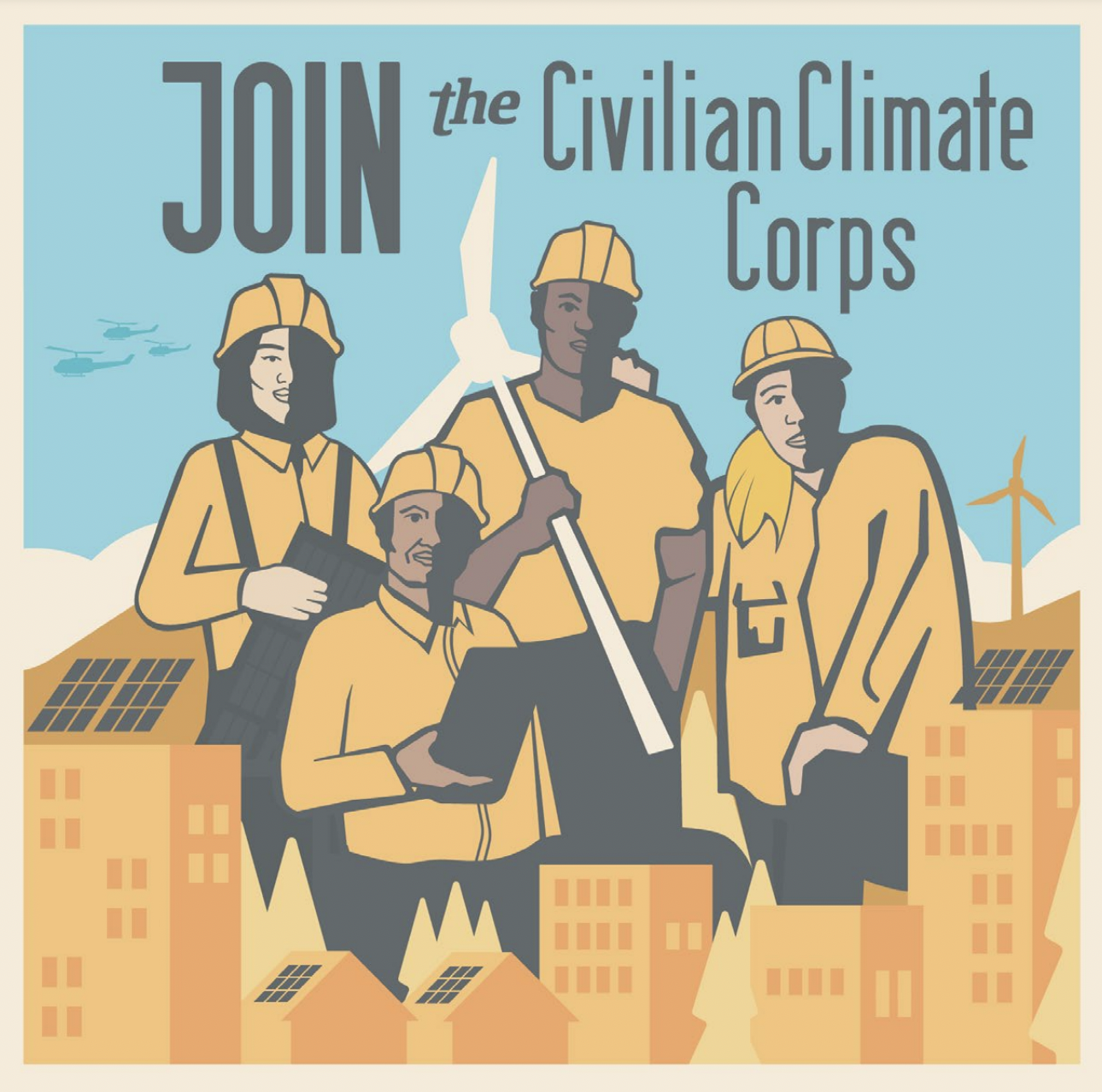 Today, Sen. Ed Markey (D-Mass.) and Rep. Alexandria
Ocasio-Cortez (D-N.Y.) are introducing the Civilian Climate Corps for
Jobs and Justice Act of
2021.
The act establishes the Civilian Climate Corps (CCC), to be administered
by the Corporation for National and Community Service within AmeriCorps.
Today, Sen. Ed Markey (D-Mass.) and Rep. Alexandria
Ocasio-Cortez (D-N.Y.) are introducing the Civilian Climate Corps for
Jobs and Justice Act of
2021.
The act establishes the Civilian Climate Corps (CCC), to be administered
by the Corporation for National and Community Service within AmeriCorps.
Over five years, 1.5 million Americans in the CCC will complete federally-funded projects that help communities respond to climate change and transition to a clean economy. CCC work will reduce carbon pollution, enable a transition to renewable energy, build healthier and more resilient communities, implement conservation projects with proven climate benefits, and help communities recover from climate disasters.
Corpsmembers will receive education and training in coordination with local institutions, including labor unions, and will coordinate closely with local groups to help develop career pathways and union opportunities in new green sectors.
Markey and Ocasio-Cortez discussed the bill on the National Mall today:
The CCC will administer a large national service program and provide simplified and enhanced grants to scale up the existing network of over 130 local and state service and conservation corps.
All corpsmembers are guaranteed the following benefits:
- Salary and benefits: Compensation of at least $15 per hour, full health care coverage, and critical support services such as transportation, housing, and childcare.
- Educational Funding: Enabling educational grants of $25,000 per year of service, up to $50,000, eligible for further education at any level or to pay down student debt.
- Career Opportunities: Corps will prioritize registered pre-apprenticeship curricula and union membership as part of service. Corpsmembers will receive vocational training appropriate to the local job market.
- Explicit antiracist language ensures that environmental justice communities receive benefits of at least 50% of CCC and Partner Corps projects, and 50% of corpsmembers will be recruited from these same communities, with no age limit for participation in at least 50% of Partner Corps.
- Labor groups will beintegrated into CCC and Partner Corps planning and operations, with DOL registered pre-apprenticeship and apprenticeship programs prioritized for grants, required coordination with local labor unions, buy American provisions in procurement, and advisory board representation from labor groups. The corps, partner corps, and any private companies partnered in corps activities will adhere to neutrality and card check agreements.
- Tribal communities will receive 10% of the dedicated EJ benefits.
Eligible projects include but are not limited to:
- Weatherizing and retrofitting residential and non-residential buildings for energy efficiency and electrification and participating in the construction of new net-zero buildings
- Maintenance and operation of energy-efficient and net zero buildings and properties
- Building energy-efficient affordable housing units
- Conducting energy audits
- Recommending ways for households to improve energy efficiency
- Installing and upgrading public transit and electric vehicle infrastructure
- Installing clean energy infrastructure in homes and small businesses, on farms, and in communities
- Advising on climate and energy policy
- Providing clean energy-related services
- Expanding broadband access and adoption
- Working with schools and youth programs to educate students and youth about ways to reduce home energy use and improve the environment
- Assisting in the development of local recycling and composting programs
- Renewing and rehabilitating public and tribal lands and trails owned or maintained by the Federal Government, an Indian tribe, a State, a municipal or local government, or any formal partners of those entities
- Improving air quality or other pollution monitoring networks
- Remediation of the effects of toxins and other hazardous pollution
- Building and maintaining green stormwater management infrastructure
- Creating and expanding local and regional food systems
- Developing farm to institution distribution models to make schools, hospitals, and other institutions healthier and more food resilient
- Performing community resilience assessments
- Collecting and analyzing data related to climate change and disasters
- Advising and planning for community resilience and adaptation
- Building and maintaining resilient infrastructure
- Conducting prescribed burns or engaging in reforestation activity
- Supporting the activities of local emergency management agencies and programs
- Advising and supporting farmers and ranchers in the implementation of management practices that account for climate change organizing community-based resiliency coalitions and working groups
- Providing disaster preparedness or community emergency response team training to community-based organizations and residents, bincluding for animals in disasters
- Providing education on climate change, disaster, and resilience at community-based organizations and schools
- Developing community climate resilience hub infrastructure
- Clearing debris after climate disasters
- Repairing and rebuilding homes and buildings
- Replanting locally adapted native trees and plants
- Stabilizing shorelines and hillsides
- Conserving, protecting, and restoring habitat, especially habitat to threatened, endangered, and at-risk species;
- Stabilizing shorelines or riparian areas using green infrastructure such as native wetlands
- Removing invasive species and planting locally adapted native species
- Collecting, storing, and propagating native seeds and plant materials
- removing hazardous fuels within one-quarter mile of dwellings and homes or one-quarter mile around delineated communities
- Planting and maintaining urban, tribal, and rural forests, trees, native grasslands, and natural areas developing urban farms and gardens
- Reforestation of native forest ecosystems, afforestation, and other projects to achieve demonstrable carbon sinks
- Reclaiming unneeded roads and tracks and restoring affected lands to natural conditions
- Restoring and managing wildlife corridors and habitat connectivity for native species, including building wildlife crossings and removing barriers to wildlife movement
- Assisting farmers and ranchers in a transition to more regenerative farming and ranching systems
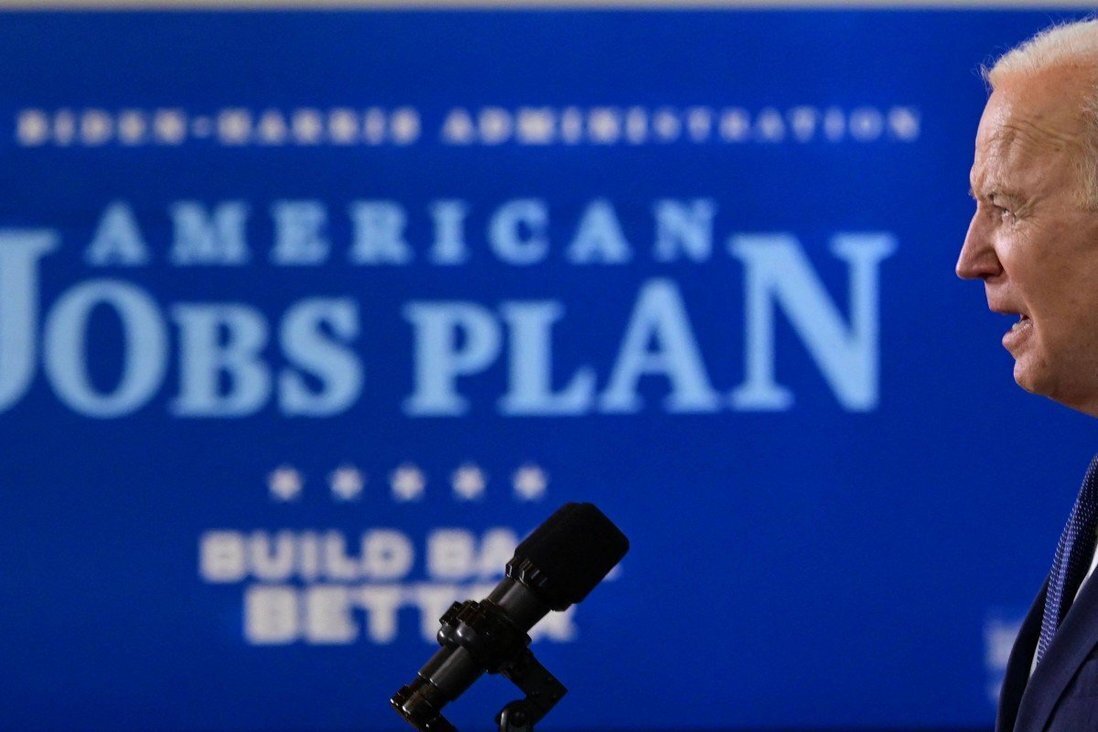 Table
modified by Hill Heat from the
Table
modified by Hill Heat from the  Today, the White House announced the
Today, the White House announced the
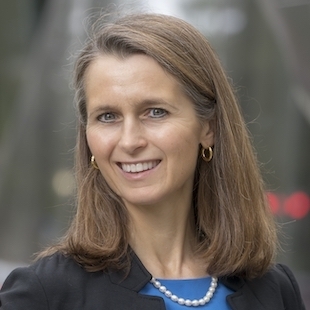 Catherine
Wolfram, a leading energy economist, has joined the Department of
Treasury as the
Catherine
Wolfram, a leading energy economist, has joined the Department of
Treasury as the 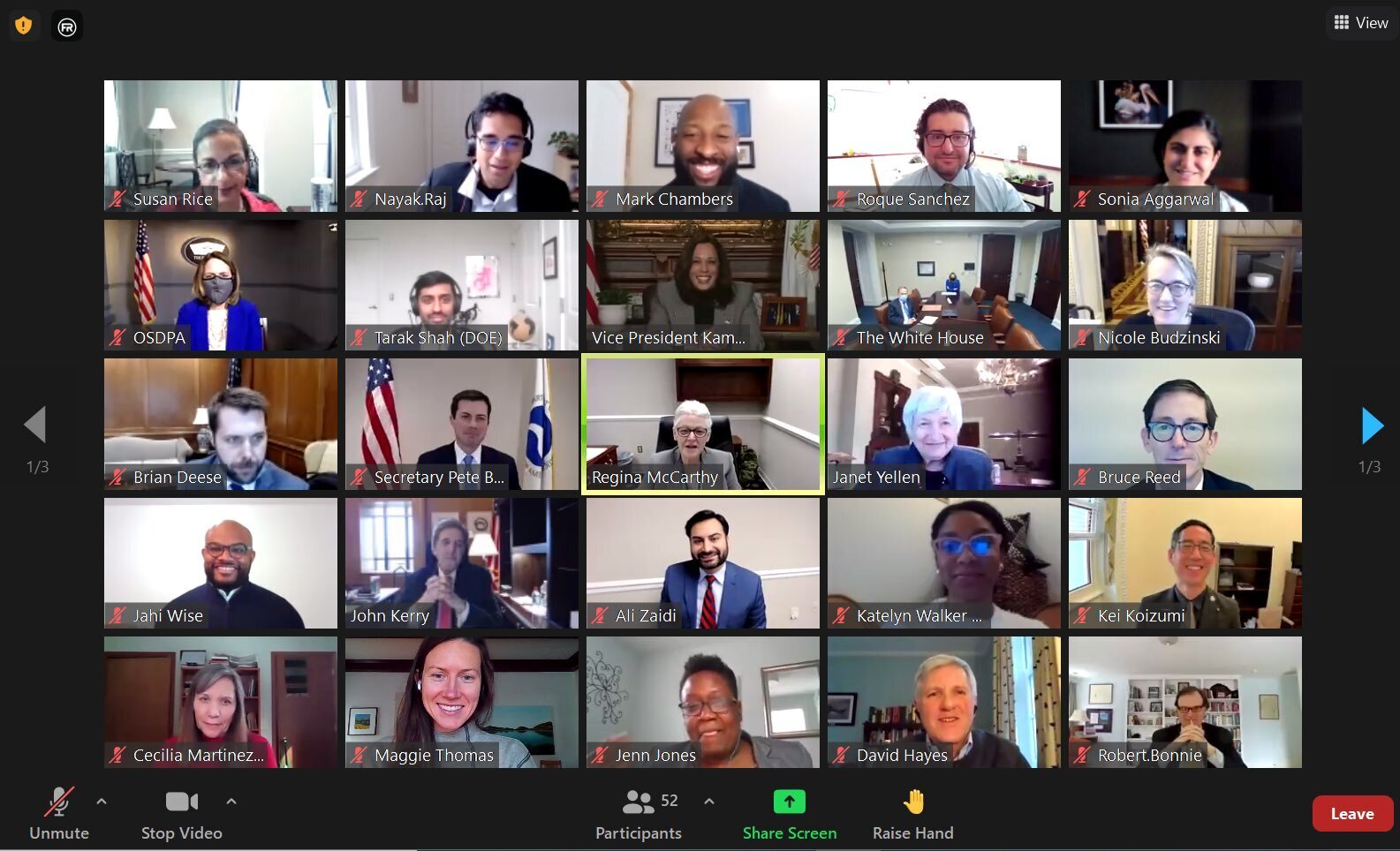 The White
House National Climate Task Force, formed by a recent
The White
House National Climate Task Force, formed by a recent  Legislation
introduced today by Reps. Earl Blumenauer (D-Ore.) and Alexandria
Ocasio-Cortez (D-N.Y.) and Sen. Bernie Sanders (I-Vt.) calls on the
President of the United States to declare a national climate emergency
and begin taking action in line with the goals of the
Legislation
introduced today by Reps. Earl Blumenauer (D-Ore.) and Alexandria
Ocasio-Cortez (D-N.Y.) and Sen. Bernie Sanders (I-Vt.) calls on the
President of the United States to declare a national climate emergency
and begin taking action in line with the goals of the 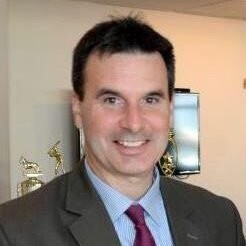 The Department
of Defense has named Joseph Bryan its
The Department
of Defense has named Joseph Bryan its  Administration names Gavin Schmidt, Robert Bonnie, Sonal Larsen, Satyam
Khanna climate advisors (clockwise from top left)
Administration names Gavin Schmidt, Robert Bonnie, Sonal Larsen, Satyam
Khanna climate advisors (clockwise from top left)
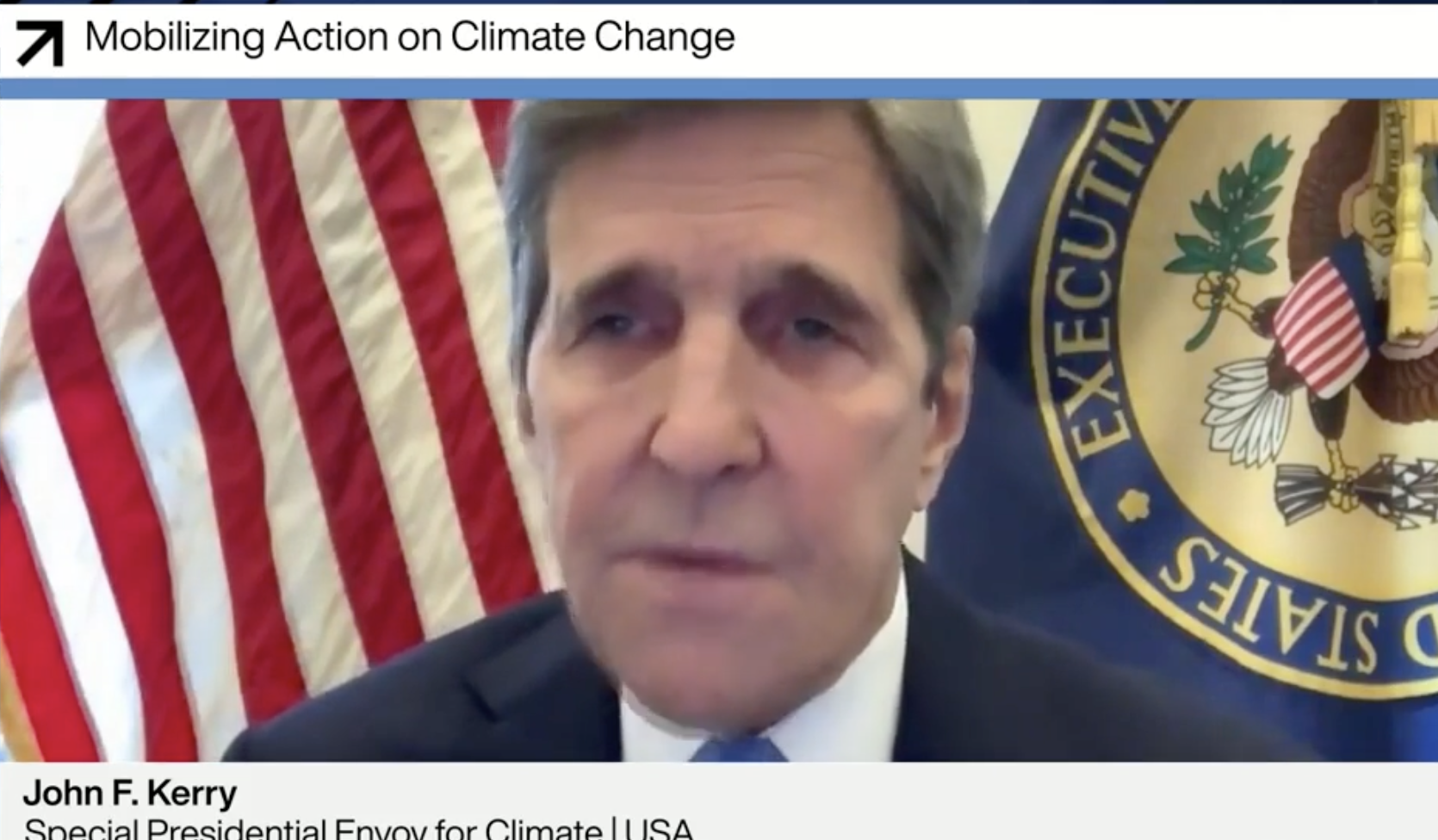 Speaking at the
Davos World Economic Forum, US Climate Envoy John Kerry offered a strong
critique of natural gas: “Gas is primarily methane, and we have a huge
methane problem, folks.”
Speaking at the
Davos World Economic Forum, US Climate Envoy John Kerry offered a strong
critique of natural gas: “Gas is primarily methane, and we have a huge
methane problem, folks.”